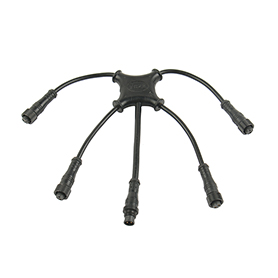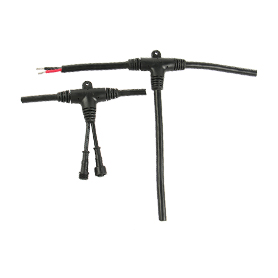News


News

5 Common Mistakes When Using t-tap wire connector waterproof (And How to Avoid Them)
Release time:2025-03-24
viewed:374
t-tap wire connector waterproof are a go-to solution for quick, reliable wire splicing in wet or harsh environments. But even the best connectors can fail catastrophically if installed incorrectly. From DIY car mods to outdoor lighting projects, improper installation leads to leaks, shorts, and costly repairs. Here are the top 5 mistakes users make—and how to avoid them.

The Problem: Dirt, grease, or oxidation on wires prevents a solid connection.
The Risk: Poor conductivity increases resistance, causing overheating or arcing.
The Fix:
t-tap wire connector waterproof
Use a wire brush to scrub off oxidation from exposed strands.
Apply dielectric grease to inhibit future corrosion.
Pro Tip: For marine or automotive use, choose tinned copper T-taps to resist saltwater corrosion.
The Problem: Crimping too hard crushes the connector, while a weak crimp leaves gaps.
The Risk: Crushed seals leak water; loose crimps cause intermittent failures.
The Fix:
Use a ratcheting crimper for consistent pressure.
Verify the crimp leaves visible “wings” on the connector barrel.
Tug-test the wire—it shouldn’t pull out.
Case Study: A car audio installer over-crimped T-taps on a subwoofer, cracking the seal. After a car wash, water seeped in, frying the amplifier.
The Problem: Assuming the connector’s built-in seal is enough.
The Risk: Microscopic gaps allow moisture ingress over time.
The Fix:
Apply silicone sealant (e.g., Permatex 81730) around the crimped area.
For harsh environments, use heat-shrink adhesive-lined tubing over the splice.
Sealant Guide:
Silicone Gel: Ideal for high-vibration areas like engine compartments.
Epoxy Putty: Best for permanent outdoor installations exposed to weather.
Self-Fusing Tape: A quick fix for emergency repairs in the field.

The Problem: Using a 16AWG T-tap on a 10AWG wire (or vice versa).
The Risk: Loose connections generate heat; oversized connectors waste space.
The Fix:
Match the T-tap’s gauge rating to the wire (e.g., 14–16AWG for most automotive uses).
For hybrid gauges, stagger two T-taps or use a reducer sleeve.
Warning: Never fold thick wires to fit smaller connectors—this weakens the conductor.
The Problem: Using standard T-taps in extreme conditions (e.g., underwater or high-pressure washdowns).
The Risk: Even IP67-rated connectors may fail under sustained submersion or UV exposure.
The Fix:
For water immersion: Choose IP68-rated T-taps with epoxy-filled seals.
For chemical exposure: Use fluoropolymer-coated connectors.
For extreme heat: Opt for high-temp silicone-sealed T-taps (rated to 200°C).
Real-World Fail: A farm irrigation system used non-UV-resistant T-taps. After six months, sunlight degraded the plastic, causing widespread shorts.
t-tap wire connector waterproof are designed for single use. Attempting to reuse them:
Compromises the crimp tension.
Breaks the factory seal.
Solution: Always use fresh connectors for critical projects.
t-tap wire connector waterproof are only as reliable as their installation. By avoiding these five mistakes—dirty wires, poor crimps, skipped sealants, gauge mismatches, and wrong environments—you’ll ensure splices stay dry and functional for years.